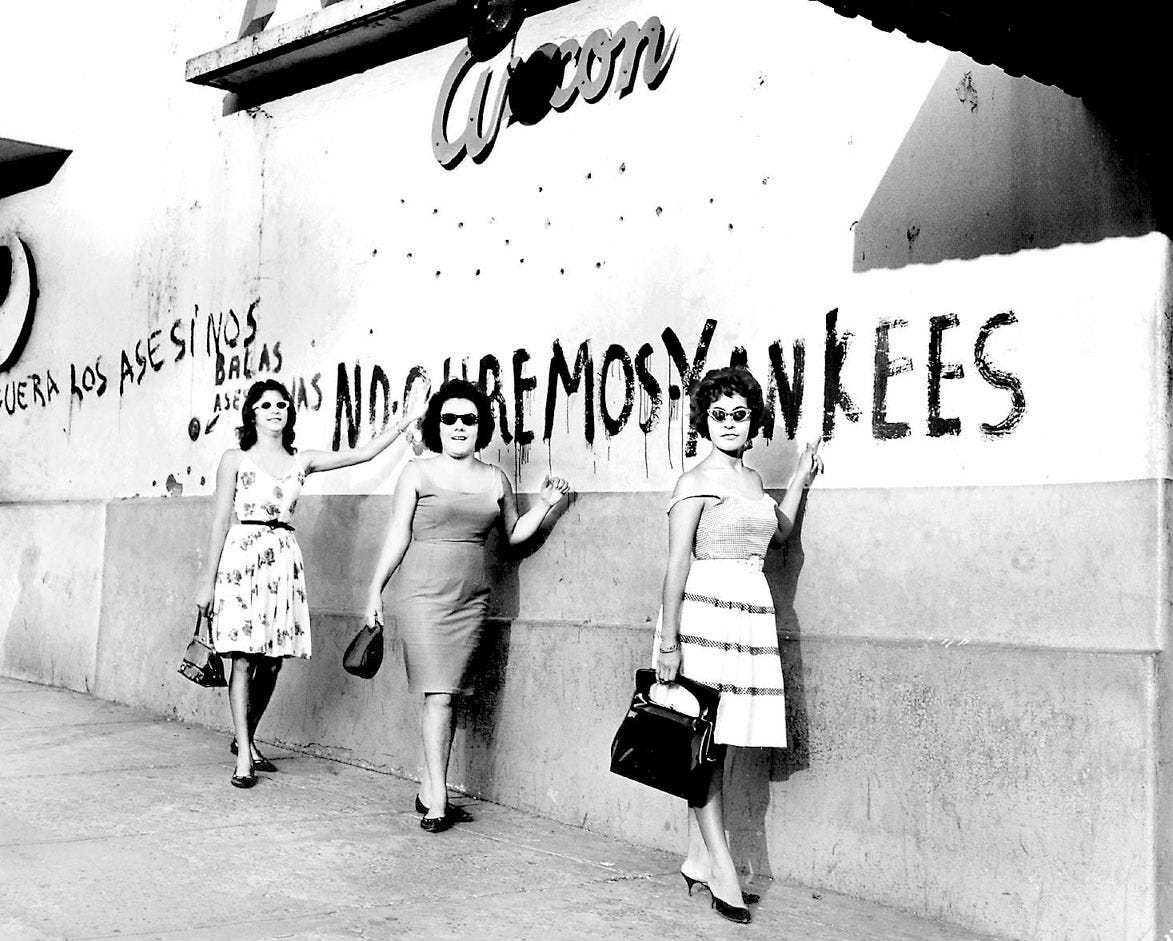08 Aug 25 | Trump versus Cuba
Also in this edition: Los Tigres del Norte go on tour. The worst drop in remittances since 2012. EZLN: Gathering of Resistances and Rebellions. The Hiroshima Panels.
Lea La Jornada Internacional en español aquí.
More of the same, 66 years later
Although some people, particularly in Miami, were expecting a shift towards confrontation at the start of the second Trump administration with Cuban American Marco Rubio as Secretary of State, so far U.S. policy has been more or less the same as Trump’s first term and Biden’s presidency. It’s a continued policy of suffocation, perhaps applied with greater intensity now, explained veteran experts on the relationship, Fulton Armstrong and José Pertierra, in interviews with La Jornada.
Armstrong emphasizes that history shows it’s not Cuba, but Washington, that has failed to embrace the challenge of normalizing relations. “The United States is not ready for a change in the relationship. The point is that the Cubans did accept the challenge of normalization — but we didn’t.”
Pertierra states, “Since the triumph of the Revolution, there’s been a policy based on the premise of suffocating the Cuban people so they’ll rise up against the government. And it doesn’t work.” He adds, “We’ve got a bully in the White House who wants to take control not just of Cuba, but of the entire planet. Cuba is a country that has been resisting for over 60 years. The regime change policy is still the same, to suffocate and suffocate and inflict suffering on the people.”
However, the last 20 years have seen the highest level of U.S. exports to the island since the revolution, notes expert John Kavulich, an advocate for trade and investment. In an interview with La Jornada, Kavulich blames both Washington and Havana for failing to do more to consolidate and deepen economic ties following the commercial opening and the normalization of relations under Obama.
Within the Cuban American community, particularly its hub in Miami, there were expectations of some sort of intervention or invasion. But six months into the Trump administration, those hopes have fizzled, says sociologist Guillermo Grenier, an expert on the Cuban diaspora in Florida. He points out that people in Miami often forget that, for Washington, relations with Cuba are not a top priority on the agenda.
Perhaps what is most remarkable is that for six decades a Caribbean island of about 10 million people has been a major obsession for the political elite of the most powerful country in the world. And while it’s not always the top priority, Cuba’s defiance of the giant remains a constant issue, one for which it seems it has not been forgiven. Fidel Castro spoke to this over the course of half a century as the leader of that experiment, including in a couple of interviews with La Jornada, conducted by Carmen Lira nearly 15 years ago.
“And when you came back to life, Commander, what did you find?” she asked. “A world gone mad... A world that appears every day on TV, in the newspapers, and that no one can make sense of, but one I wouldn’t have missed for anything in the world,” he replied with an amused smile.
Some of the most powerful images of that revolution and its leaders were gifted to the world by the master photographer and chronicler of social struggles across the Americas, Rodrigo Moya, who passed away last week. Moya’s images, writes Luis Hernández Navarro, “are essential in the battle of ideas surrounding Cuba and its Latin American legacy.” Meanwhile, Rebeca Monroy Nasr offers a portrait of the portraitist.
These are voices and images that continue to make Washington, and other centers of power, uncomfortable.
La Frase:
What bothers them about Cuba aren’t the mistakes of the revolution, which there have been and still are. What they truly can’t stand is that a small, poor country refuses to bow down to the Empire.
-Eduardo Galeano
In case you missed it
◻️ The Jefes de jefes launch new tour. Los Tigres del Norte roared through their famous corridos during the Mexico City stop of their 2025 Lotería Tour. The legendary band from Sinaloa continues to leave its mark on generations on both sides of the U.S.–Mexico border.
◻️ Dramatic drop in inequality in Mexico. Inequality has fallen to its lowest level since records began in 1984. “A model based on ‘for the good of all, put the poor first’ delivers results, not just in reducing poverty and inequality, but for the entire country,” declared President Claudia Sheinbaum, in response to the new data.
◻️ Worst drop in remittances since 2012. Over 75,000 Mexicans have been deported from the U.S., and those remaining without documents are being forced into the shadows because of the threat of raids, giving up work, school, and public places. All of this has contributed to the sharpest drop in remittances since September 2012, according to the Bank of Mexico. La Jornada stated in an editorial: “Authorities have an ethical duty to create conditions that ensure returning migrants can live in Mexico with physical and financial security.”
◻️ At least 11 femicides every day in Latin America and the Caribbean. In Mexico, the national trend has worsened. Over the past decade, femicides have increased by 93%, with 8,127 cases recorded between January 2015 and December 2024.
◻️ EZLN: Gathering of resistance and rebellion. Nearly 800 people from 37 countries gathered in Chiapas for a national meeting convened by the Zapatista Army of National Liberation (EZLN) to share experiences in “anti-system struggle.” Subcomandante Moisés stated the goal was “not to just expose the theoretical evils of capitalism, but to show what’s being done to resist and rebel—to fight back.” The opening included messages of solidarity with Palestinians, declaring, “We are all Palestinian girls; we are all Palestinian boys.” ▶️ VIDEO
◻️ Stiglitz praises Brazil’s brave stand against Trump. Under Lula’s leadership, Brazil has reaffirmed its commitment to the rule of law and democracy, while the United States appears to be abandoning its own, writes Nobel Prize-winning economist Joseph Stiglitz. “We can only hope that other leaders, from both large and small nations, will show similar courage in the face of bullying by the world’s most powerful country. Trump has undermined democracy and the rule of law in the U.S., possibly beyond repair. We must not let him do the same elsewhere.”
◻️ The Hiroshima Panels. The profound moral wound left by the U.S. dropping the atomic bomb 80 years ago, the first and only use of weapons of mass destruction in history, still resonates through the monumental Japanese artwork known as The Hiroshima Panels.
◻️ Nuclear tensions between Moscow and Washington reach alarming levels. Juan Pablo Duch, reporting from Moscow, writes that Trump has ordered nuclear submarines to move closer to Russia in response to what he called an “extreme provocation” by a former Russian president. In other news, Duch reports on plummeting support for Ukraine’s president, noting that only the war has kept him in power.
◻️ Progressive lawmakers across the Americas push back against neoliberal offensive. The Second Pan-American Congress ended with a call from progressive lawmakers for “a new solidarity among nations as a strategy of resistance against the neoliberal offensive.” U.S. Congresswoman Delia Ramírez highlighted the work being done with counterparts across the hemisphere to develop joint strategies for defending migrant rights. Palestinian-American Congresswoman Rashida Tlaib added that she was moved by the shows of support for Palestine in Mexico’s Congress.










